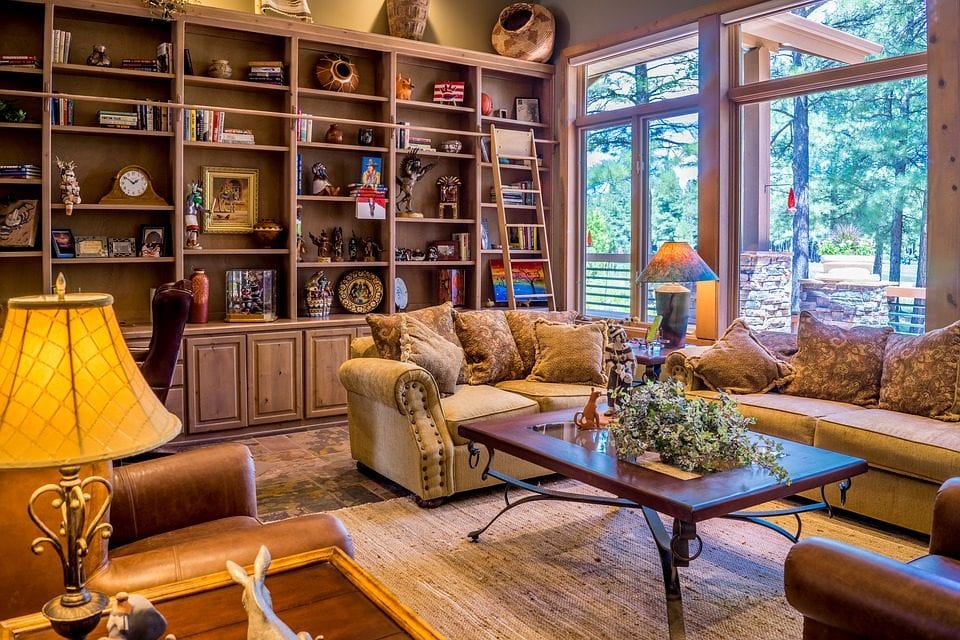“What a beautiful house, but I could not live in it.” Any dwelling, real or imagined, is a reified model of the inner self of man. We involuntarily fill it with personal experiences, internal conflicts and anxieties. In turn, the house – the color of the walls, the layout, furniture – affects our perception and well-being. How to make a house cozy?
1. Give up minimalism in favor of nature
Studies show that rooms that look too “sterile”, cold and minimalistic, contain many details of metal and artificial materials, our unconscious perceives as dangerous. This situation provokes the release of stress hormones. “We feel comfortable and relaxed in nature, surrounded by flowers and trees, close to water and a fireplace,” says John Zeisel, a neurologist and co-founder of the Academy of Anthropological Design (USA).
The need for an organic environment is called biophilia, a term proposed by Edward Wilson, a professor of comparative zoology at Harvard University. He believes that the love of nature is inherent in us genetically: “Our brain evolved in the biocentric world, and not in a world that is regulated by mechanisms and machines.”
In an apartment with a view of the urban buildings, we feel worse than in a house in nature – noticeably reduced the ability to concentrate, we are scattered, poorly remembered, we are more difficult to build logical connections. This result was shown by a comparative study led by Frances Kuo, a specialist in environmental psychology at the University of Illinois.
Tip: Fill the house with plants. Beat the windows to get the most out of the opening view. If you have a garden, do not curtain the windows to make it easier to see.
2. Do not worry about the mess
Our brain needs chaos – of course, within reasonable limits. Paintings, furniture, accessories, located in artistic disorder, the game of various colors and textures strengthens the thinking ability. Dr. Esther Sternberg of the American National Institute of Mental Health found that such details create a positive atmosphere in the room. Green color has a calming effect on the human psyche, red excites nervous activity, oval tables facilitate perception, the abundance of corners keeps in suspense.
Tip: Do not try to show people around the ideal home – so many people want to show only impeccable, socially approved parts of their own “I”. Such self-deception is achieved by abandoning personal history. The happy house is full of personal things, souvenirs brought from memorable places, and gifts from loved ones. Fill your home with accessories, paintings, trinkets that cause you to have pleasant associations and memories.
3. Create nooks and corners
“We prefer cozy rooms with secluded corners that allow us to safely watch what is happening around, without the feeling that someone is interfering with our personal space,” says Professor Frank McAndrew, a specialist in the field psychology of the environment from Knox College.
Advice: Sofas or armchairs should not be placed opposite each other – they do not invite you to a pleasant conversation, but, on the contrary, create a sense of opposition, opposition. Professor Robert Sommer, one of the founders of the psychology of the environment, warns that a similar situation arises in the kitchen, when the one who cooks is forced to stand with his back to everyone else. “When we have the opportunity to see a room and people, a hormone of confidence oxytocin and a hormone of joy is serotonin,” explains designer Johny Gray.
4. Take all the best from the past
In our apartment, we unconsciously reproduce the features of the house of our childhood: in style, furniture, the arrangement of rooms and objects. It gives a sense of security, peace and comfort, just like when we were children.
Make a list of all the places in which you lived for six months or more. Remember where the accommodation was most comfortable, and arrange the houses in increasing order – from the most uncomfortable to the most comfortable. Remember and name the things that you especially loved in these houses. This self-examination will determine what is really dear to you, and create a home that will nourish your deep needs.
5. Talk to the house
It sounds strange, but talking with the house is a useful habit. So you can clarify your secret unconscious feelings that you are experiencing. Clare Cooper Marcus (Clare Cooper Marcus), an architect at the University of California, in her study, asked people to draw their house and talk to him as if they were living beings. What would you tell him? Now imagine yourself in his place. “People become more sincere when they speak on behalf of their home,” explains Cooper Marcus. – Sometimes there are very interesting things, for example, to one owner the house “said” that it is time for him to move. ” What would your house say?
Image Credit: bedrck



